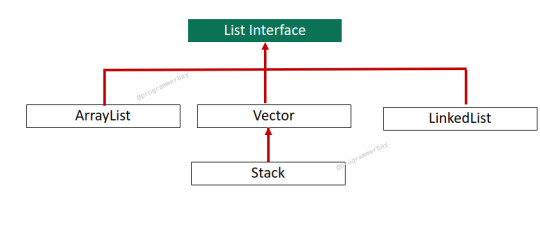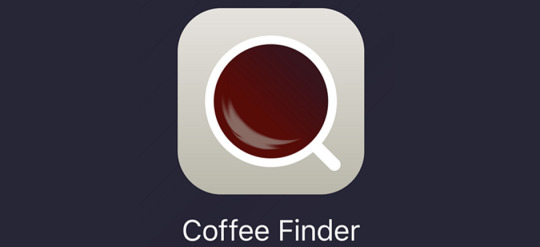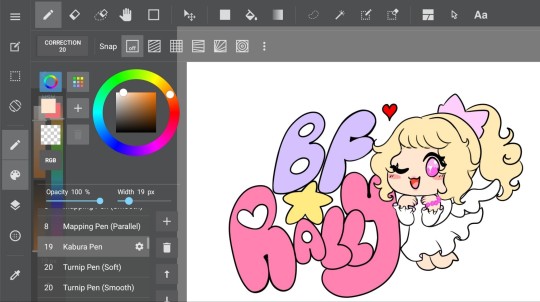#Java Frameworks
Explore tagged Tumblr posts
Text
How can you serialize and deserialize Java objects for frontend-backend communication?

1. What’s Java Serialization and Deserialization All About?
So, how do you handle communication between the frontend and backend in Java? It’s all about turning Java objects into a byte stream (that’s serialization) and then back into objects (deserialization). This makes it easy to exchange data between different parts of your app. The Serializable interface in Java is key for this, as it helps keep the state of objects intact. If you’re taking a Java course in Coimbatore, you’ll get to work on this a lot. Serialization is super important for things like APIs and managing sessions. For Java backend developers, it's a must-know.
2. Why Is Serialization Important Nowadays?
When it comes to Java and modern web apps, we often use JSON or XML for serialized data. Libraries like Jackson and Gson make it easy to convert Java objects to JSON and vice versa. These formats are great for frontend and make communication smoother. If you study Java in Coimbatore, you'll learn how serialization fits into REST APIs. Good serialization helps keep your app performing well and your data secure while also supporting setups like microservices.
3. What’s the Serializable Interface?
The Serializable interface is a simple marker in Java telling the system which objects can be serialized. If you get this concept down, it really helps answer how to serialize and deserialize Java objects for frontend-backend communication. By using this interface, you can easily save and send Java objects. Students in a Java Full Stack Developer Course in Coimbatore learn how to manage complex object structures and deal with transient variables to keep things secure and fast.
4. Tools and Libraries for Serialization in Java
To serialize objects well, developers often rely on libraries like Jackson and Gson, along with Java’s ObjectOutputStream. These are essential when you’re trying to serialize Java objects for frontend-backend communication. With these tools, turning Java objects into JSON or XML is a breeze. In Java courses in Coimbatore, learners work with these tools on real projects, and they offer options for customizing how data is serialized and handling errors more smoothly.
5. Deserialization and Keeping Things Secure
Deserialization is about getting objects back from a byte stream, but you've got to do this carefully. To serialize and deserialize Java objects safely, you need to check the source and structure of incoming data. Training in Coimbatore covers secure deserialization practices so you can avoid issues like remote code execution. Sticking to trusted libraries and validating input helps keep your app safe from attacks.
6. Syncing Frontend and Backend
Getting the frontend and backend in sync relies heavily on good serialization methods. For instance, if the Java backend sends data as JSON, the frontend—often built with React or Angular—needs to handle it right. This is a key part of learning how to serialize and deserialize Java objects for frontend-backend communication. In Java Full Stack Developer Courses in Coimbatore, students work on apps that require this skill.
7. Dealing with Complex Objects and Nested Data
A big challenge is when you have to serialize complex or nested objects. When figuring out how to serialize and deserialize Java objects for frontend-backend communication, you need to manage object references and cycles well. Libraries like Jackson can help flatten or deeply serialize data structures. Courses in Coimbatore focus on real-world data models to give you practical experience.
8. Making Serialization Efficient
Efficient serialization cuts down on network delays and boosts app performance. Students in Java training in Coimbatore learn how to make serialization better by skipping unnecessary fields and using binary formats like Protocol Buffers. Balancing speed, readability, and security is the key to good serialization.
9. Real-Life Examples of Java Serialization
Things like login sessions, chat apps, and shopping carts all depend on serialized objects. To really understand how to serialize and deserialize Java objects for frontend-backend communication, you need to know about the real-time data demands. In a Java Full Stack Developer Course in Coimbatore, you’ll get to simulate these kinds of projects for hands-on experience.
10. Wrapping It Up: Getting Good at Serialization
So how should you go about learning how to serialize and deserialize Java objects? The right training, practice, and tools matter. Knowing how to map objects and secure deserialized data is crucial for full-stack devs. If you're keen to master these skills, check out a Java course or a Java Full Stack Developer Course in Coimbatore. With practical training and real projects, Xplore IT Corp can set you on the right path for a career in backend development.
FAQs
1. What’s Java serialization for?
Serialization is for turning objects into a byte stream so they can be stored, shared, or cached.
2. What are the risks with deserialization?
If deserialization is done incorrectly, it can lead to vulnerabilities like remote code execution.
3. Can every Java object be serialized?
Only objects that implement the Serializable interface can be serialized. Certain objects, like threads or sockets, can’t be.
4. Why use JSON for communication between frontend and backend?
JSON is lightweight, easy to read, and can be easily used with JavaScript, making it perfect for web apps.
5. Which course helps with Java serialization skills?
The Java Full Stack Developer Course in Coimbatore at Xplore IT Corp offers great training on serialization and backend integration.
#Java programming#Object-oriented language#Java Virtual Machine (JVM)#Java Development Kit (JDK)#Java Runtime Environment (JRE)#Core Java#Advanced Java#Java frameworks#Spring Boot#Java APIs#Java syntax#Java libraries#Java multithreading#Exception handling in Java#Java for web development#Java IDE (e.g.#Eclipse#IntelliJ)#Java classes and objects
0 notes
Text
Understanding Java Frameworks: Powering Modern Application Development

Java frameworks have become an essential part of the development landscape, streamlining tasks and boosting productivity for developers. In a world where building applications needs to be fast, efficient, and scalable, these frameworks provide the backbone that supports the modern digital experience. Whether you're building web applications, APIs, or enterprise-level software, Java frameworks offer the structure and libraries you need to succeed. In this blog post, we’ll explore the importance of Java frameworks, their types, and how they make developers’ lives easier.
What is a Java Framework?
Before diving into specific examples, it’s crucial to understand what a Java framework is. At its core, a framework is a pre-built structure that provides a foundation for developers to build applications without having to start from scratch. Think of it as a skeleton that comes with built-in components and tools, allowing developers to focus on writing their application’s unique features instead of reinventing the wheel.
Java frameworks are particularly beneficial because they enable developers to adhere to best practices, ensure scalability, and reduce development time. They come with predefined templates, libraries, and conventions that help to solve common problems, such as handling data persistence, user interface design, and security.
Why Use a Java Framework?
Java frameworks simplify the development process in several ways:
Efficiency: Frameworks provide ready-made tools and libraries that speed up the development process. Developers can focus on implementing specific business logic rather than writing code for common tasks such as database connectivity or user authentication.
Standardization: Using frameworks ensures that your code is consistent, maintainable, and adheres to industry standards. This reduces bugs and makes collaboration within teams more seamless.
Security: Many Java frameworks come with built-in security features, such as protection against common web vulnerabilities (like SQL injection or cross-site scripting).
Scalability: Frameworks like Spring or Hibernate are designed to support applications that scale easily, making them a good fit for enterprises or high-traffic applications.
Community Support: The most popular Java frameworks have extensive communities and documentation. This makes troubleshooting and finding solutions to problems easier.
Types of Java Frameworks
Java frameworks can be categorized based on the type of applications they’re best suited for. Here are some of the most commonly used types:
1. Web Frameworks
Java web frameworks are designed for building web applications, providing solutions for everything from routing and form handling to security and session management. These frameworks are crucial for developers who need to build feature-rich web applications with minimal effort.
Spring MVC: One of the most popular Java frameworks for building web applications. It provides a flexible model-view-controller (MVC) architecture, which separates the application logic from the presentation layer, making it easier to manage and maintain.
Struts: An older yet still widely used Java framework that offers a robust framework for building web applications. It helps developers manage form submissions, and session handling, and integrates well with other Java technologies like JDBC and Hibernate.
2. Enterprise Frameworks
Enterprise frameworks are focused on building large-scale business applications. These are used in industries such as banking, insurance, and healthcare, where performance, security, and scalability are of utmost importance.
Spring Framework: While widely known for web development, Spring is also a comprehensive framework for building enterprise-level applications. It supports dependency injection, aspect-oriented programming, and a wide range of enterprise services, including transaction management and messaging.
JavaServer Faces (JSF): This is a Java framework specifically for building user interfaces for enterprise applications. It abstracts much of the complexity associated with building and managing web interfaces in large-scale applications.
3. ORM Frameworks
Object-Relational Mapping (ORM) frameworks handle the conversion between Java objects and relational databases, making it easier to interact with databases without writing complex SQL queries.
Hibernate: The most widely used ORM framework in Java, Hibernate simplifies the interaction between Java applications and databases. It automatically handles database operations like CRUD (Create, Read, Update, Delete) and provides built-in support for caching and transaction management.
EclipseLink: An alternative to Hibernate, EclipseLink offers similar ORM functionality and is widely used for enterprise-level applications.
Popular Java Frameworks in Action
Let’s take a closer look at how some of these popular frameworks are used in the real world:
1. Spring Framework
Spring is arguably the most powerful and flexible framework in the Java ecosystem. It's designed to make Java development easier by offering a comprehensive ecosystem that supports dependency injection, aspect-oriented programming, and enterprise services.
Developers love Spring because it’s modular. You can choose to use just the components you need, such as Spring MVC for web applications or Spring Boot for creating stand-alone applications. Its versatility makes it suitable for everything from small web apps to large enterprise-level systems.
2. Hibernate
Hibernate makes interacting with databases much more straightforward. Instead of writing SQL queries, developers can work directly with Java objects. Hibernate handles the heavy lifting of database management, reducing boilerplate code and ensuring that your application remains efficient as it scales. For applications with complex database interactions, Hibernate is a go-to solution for ORM.
3. Struts
Struts may be older, but it remains relevant because of its stability and simplicity. It allows developers to build scalable web applications and offers good integration with other Java technologies. Struts follow the MVC pattern, making it a solid choice for maintaining separation of concerns in a web application.
Choosing the Right Java Framework
Selecting the right Java framework depends largely on the type of application you are building. If you need to build a quick web application, Spring MVC or Struts might be the right choice. For large-scale enterprise applications, you may lean towards Spring with its comprehensive suite of tools. And if you are working with databases, Hibernate will be invaluable.
Here are a few tips when choosing a Java framework:
Project Requirements: Consider the nature of your project. Is it a small web app, a complex enterprise system, or something in between? Different frameworks cater to different needs.
Community Support: A larger community often means more resources, tutorials, and troubleshooting help. Frameworks like Spring and Hibernate have vast communities and plenty of documentation to support you.
Learning Curve: Some frameworks are easier to learn than others. Spring, for example, offers extensive flexibility but might require a steeper learning curve than simpler frameworks like Struts.
Conclusion
Java frameworks are indispensable tools for developers who want to build efficient, secure, and scalable applications. With so many options available, ranging from web development to enterprise and ORM solutions, Java frameworks cater to every need in the development process. Whether you choose Spring for its versatility or Hibernate for its database management, each framework plays a significant role in simplifying and accelerating application development.
In today's fast-paced development environment, relying on Java frameworks can make the difference between a project that’s cumbersome and one that runs smoothly. And as technology continues to evolve, so too will the capabilities and impact of these frameworks, ensuring that Java remains at the forefront of modern application development.
Java frameworks continue to power a wide range of applications, making them essential in the toolkit of any serious developer.
1 note
·
View note
Text

Are you looking for the best Java frameworks? Do you want to enquire about the Java frameworks? Here, we have shared comprehensive information related to this popular technology. In the article, we have come up with the best 10 Java frameworks you should know. But, what are Java frameworks? Let’s discuss it first.
0 notes
Text
Essential Java Libraries Every Developer Should Know About

Java is a flexible and strong programming language generally utilised for fostering a different scope of uses. From web improvement to portable applications, endeavour programming to logical figuring, Java keeps on being a famous decision among engineers.
One of the fundamental explanations behind Java’s prevalence is its extensive environment of libraries and structures. These libraries provide pre-composed code and prepared-to-utilize functionalities that save engineers time and exertion, enabling them to zero in on taking care of explicit issues as opposed to rehashing an already solved problem. This makes Java an ideal choice for developers looking to build web applications using Java.
In this blog, we will explore an organised rundown of fundamental Java libraries that each engineer ought to be aware of. These libraries offer many elements, including information control, organising, simultaneousness, testing, logging, and substantially more. Whether you are a novice or an accomplished Java developer, these libraries will upgrade your efficiency and assist you with building strong and productive applications.
Guava:
Guava is a strong open-source library created by Google that complements the core Java libraries. It offers a rich arrangement of utilities and information structures, including caching, and functional programming support, and that’s only the tip of the iceberg. Guava’s assets lie in its elegant API design and the convenience it accommodates normal programming tasks. Whether you need to handle collections more efficiently or work with functional programming concepts, Guava is an astounding decision.
Benefits of Guava
Rich Collection Utilities:
A comprehensive set of collection utilities
Convenient and efficient working with collections
Immutable collections for robust and scalable code
Helper methods for filtering, transforming, and combining collections
Functional Programming Support:
Incorporates functional programming concepts
Provides functional interfaces like Function, Predicate, and Supplier
Enables expressive and concise code
Utilities for working with functional types like Optional and Streams
String Utilities:
Enhanced functionality for string manipulation
Utilities for joining and splitting strings
Handling null or empty strings gracefully
CharMatcher class for efficient character matching and manipulation
Caching:
Powerful caching framework
Efficient creation and management of caches
Control over cache size, eviction policies, expiration times, and concurrency levels
Improved application performance by caching expensive operations or frequently accessed data
Event Bus:
Decoupling components and implementing event-driven architectures
Publishing and subscribing to events
Loose coupling and better modularity
Simplified communication and introduction of new functionalities or components
Drawbacks of guava:
Learning Curve:
Guava introduces new concepts and APIs.
Requires learning and getting used to.
Especially for developers unfamiliar with functional programming or Google’s coding style.
May take time to understand and leverage Guava’s features effectively.
Code Size:
Using Guava may increase project dependencies.
The library itself is not lightweight.
The additional overhead of including Guava may not be justified.
Particularly in resource-constrained environments or small-scale projects.
Java 8 Overlap:
Many features in Guava are now available in core Java libraries since Java 8.
Guava provides backward compatibility and enhancements.
Some features may overlap with the built-in capabilities of Java 8 or newer versions.
Apache Commons:
Apache House is an assortment of reusable Java parts that give executions to normal errands like string control, input/yield tasks, and information structures. It offers a large number of utilities and is generally embraced by designers around the world. A few outstanding parts incorporate Apache Center Lang (for working with strings, exhibits, and dates), Apache Commons IO (for input/output operations), and Apache Commons Collections (for advanced data structures).
Pros of Apache Commons:
Extensive Functionality: Offers a wide range of utilities and components for various tasks, saving development time.
Community-Driven Development: Developed by an active open-source community, ensuring continuous improvements and bug fixes.
Mature and Stable: Established as a reliable and stable library through rigorous testing and development.
Wide Adoption: Popular among Java developers, providing ample resources and community support.
Interoperability: Integrates well with other libraries and frameworks, making it versatile for different projects.
Cons of Apache Commons:
Learning Curve: The extensive range of components may require time and effort to understand and explore.
Library Size: Including the entire library may increase the project footprint, potentially problematic for resource-limited applications.
Dependency Management: Proper management of dependencies, including potential conflicts or compatibility issues, is crucial.
Limited Customization: Some developers may prefer more customizable solutions tailored to their specific needs.
Jackson:
Jackson is an elite exhibition JSON handling library for Java. It offers powerful help for parsing JSON information into Java objects (deserialization) and changing over Java objects to JSON (serialisation). Jackson offers flexible configuration options, extensive compatibility, and excellent performance, making it the go-to library for JSON processing in Java. It coordinates consistently with well-known systems like Spring and is generally utilised in web improvement.
Pros:
Comprehensive and Flexible: Supports various JSON formats and offers flexible configuration options.
High Performance: Utilises efficient algorithms and optimised parsing techniques for quick processing.
Integration with Java Frameworks: Seamlessly integrates with popular Java lightweight web frameworks like Spring.
Rich Feature Set: Offers a wide range of features, including support for data binding and handling complex object graphs.
Community Support: Has a large and active community of developers, ensuring ongoing support and frequent updates.
Cons:
Configuration Complexity: Numerous configuration settings and features may overwhelm developers.
Learning Curve: Requires learning about annotations, object-mapping mechanisms, and configuration settings.
Potential Performance Overhead: Flexibility and extensive features may introduce some performance overhead.
JUnit:
Software development includes unit testing, and JUnit is the de facto standard library for Java unit testing. It offers a straightforward and tasteful framework for creating test cases and executing them to confirm the accuracy of your code. Writing and organizing test suites is made simple by JUnit’s support for annotations, assertions, test fixtures, and test runners. It enables automated testing as part of the development process and interfaces seamlessly with building technologies like Maven and Gradle.
Pros:
Simplified Test Writing: JUnit provides an easy-to-use framework with annotations, assertions, and test fixtures.
Test Organization: Test cases can be organised into logical groups using test suites and runners.
Test Coverage Analysis: JUnit supports code coverage tools to identify inadequately tested code.
Continuous Integration Support: JUnit works well with CI systems like Jenkins, Travis CI, and CircleCI.
Cons:
Learning Curve: Mastering advanced features and best practices of JUnit may require time and experience.
Test Maintenance Overhead: Tests need to be regularly updated as the codebase evolves.
Limited Support for Asynchronous Testing: JUnit has some limitations when it comes to testing asynchronous code.
Dependency on External Resources: Testing components relying on external resources requires additional configuration and setup.
Hibernate:
The object-relational mapping (ORM) package called Hibernate makes it easier for Java programs to access databases. It enables object-oriented paradigms to be used by developers to interact with databases, doing away with the requirement for manual SQL queries. Hibernate manages the mapping of Java objects to database tables, automates CRUD (Create, Read, Update, Delete) activities, and offers sophisticated capabilities like transaction management, lazy loading, and caching. It is a foundational Java persistence library that is frequently applied in enterprise-level applications.
Productivity and Simplicity
Hibernate eliminates the need for writing tedious and error-prone SQL queries manually.
It provides a higher level of abstraction by mapping Java objects to database tables.
Developers can focus on business logic instead of dealing with low-level database operations.
Simplifies development and boosts productivity.
Database Independence
Hibernate allows easy switching between different database vendors.
Supports various databases such as Oracle, MySQL, PostgreSQL, and more.
Minimal configuration changes are required to switch the underlying database.
The application code does not need to be rewritten.
Object-Oriented Paradigm
Working with persistent objects directly instead of SQL statements and result sets.
Promotes an object-oriented approach to data access.
Leverages Java’s object-oriented features like inheritance, polymorphism, and encapsulation.
Caching and Performance Optimization
Hibernate includes first-level and second-level caches to improve application performance.
The caching mechanism reduces database round-trips and stores frequently accessed data in memory.
Faster response times and reduced load on the database.
Transaction Management
Hibernate simplifies transaction management with automatic support.
Defines transaction boundaries for data consistency and integrity.
Efficient management of transactions with support for different isolation levels.
In conclusion, mastering these essential Java development services will undoubtedly enhance your skills as a Java engineer and engage you to fabricate vigorous, proficient, and viable applications. Keep exploring and experimenting with these libraries, and stay updated with the latest advancements in the Java ecosystem to stay ahead in your development journey.
Read More Essential Java Libraries Every Developer Should Know About
#Java Libraries#Java Development Services#Java Application development#Java Frameworks#Java Slandered Library#Java Web Framework
0 notes
Text



19 July 2023
I am trying my best to drink more water, and this big water bottle with motivational quotes is helping me a lot! Is strange, but to look at it, and know the pacing is great.
About programming, as I have to hurry up with my studies in order to keep up with the new architecture squad, I am trying to figure out the best notebook to write, as I learn better by writing.
I am using the purple one to Java, programming logic, SQL and GIT-Github; the colorful to Typescript and Angular, and I am thinking of using the brown to Spring Framework (as it is a huge topic).
Yes, for whom was working with JSF, JSP, JQuery (it is better to say that I was struggling with JQuery... hated it), it is a big change to turn my mindset to this modern stack - I will deal less with legacy code.
I am accepting all possible tips regarding Angular and Spring Framework, if is there anyone working with it here ❤️
That's it! Have you all a great Wednesday 😘
#studyblr#study#study blog#daily life#dailymotivation#study motivation#studying#study space#productivity#study desk#programming struggles#programming#must lean java#spring framework#coding#coding community#programming community#bottle#water bottle#notebook#stationary#purple#i love purple
66 notes
·
View notes
Text
.
#tag talk#I feel good cause a new friend at work said something about how my boyfriend hasn't talked much to him since meeting me#And I was like uh oh I do not want to be that bitch#and I know he's been trying to organize some kind of game might and I was like rip you can't get him to play stardew valley with you#and I don't like stardew valley so I was like hey what about minecraft? because if I get them playing together on a realm then It's fixed#so anyway now I might have a new server and friend group to play with and hopefully I'll be less in the way of the preexisting friend group#because I'm really conscious of when I'm the reason stuff goes poorly so I don't wanna be a reason friends don't hang out anymore.#cause that shit sucks. jealous girlfriend type can go die I ain't about hogging people I don't feel good about it.#I just want everyone to get along and be friends#I'm putting in the work to learn bedrock mechanics. that's how committed I am to this. I hate variations on an established base.#it's the autistic in me for sure. I loathe multiple versions of songs. there can only be one true version. one right answer. all else is bad#so the slight discrepancies between bedrock and Java drive me absolutely nuts bonkers up the wall#I read a really good twilight fanfic and it rewired my brain and now I'm forever mixing up which is cannon and which is fanfic#because my brain immediately booted the version I preferred less and installed the new fanfic version as the correct right version#anyway. I'm hunting tutorials that actually explain the mechanics and taking notes so I know how to adjust the designs for aesthetics#because you need the minimum mechanical base to work before you can ad lib a building style and design onto the structural framework#I figured out the iron farm mechanics so tomorrow I think I'm gonna work on gold farm stuff. and redstone I just want to learn myself
2 notes
·
View notes
Text
Vector Class in Java With Program Example
Vector is a collection class that implements dynamic array data structure to store elements, signifying growable array as its underlying data structure. It accepts duplicate elements and preserves insertion order. It can hold elements of different data types and allows null value. The Vector class was introduced in Java 1.2 version and is part of the original Java API. It is similar to…

View On WordPress
#collection#collection framework#Contructor of Vector#java#java program#Legacy class#List interface#Methods of Vector#Vector class
2 notes
·
View notes
Text
Decode DSA with Python: Comprehensive Learning Including Python Tuple
Master Data Structures and Algorithms (DSA) with Python in this comprehensive guide. Learn key concepts step-by-step, including how Python tuples play a role in efficient coding. Whether you're preparing for coding interviews or improving your problem-solving skills, this tutorial offers practical insights and clear examples to boost your understanding of Python-based DSA. Click to read the complete guide
#bca course subjects#python tuple#Exception handling in Java#Collection framework in java#Inheritance in java#Interface in Java
0 notes
Text
0 notes
Text
Ücretsiz Yazılım Eğitimleri: Java ve Blazor Teknolojilerine Hakim Olun!
Albatu YouTube kanalı, yazılım geliştirme alanında kapsamlı ve ücretsiz eğitim serileri sunmaktadır. Özellikle Java ve Blazor teknolojilerine odaklanan bu eğitimler, hem temel seviyedeki geliştiriciler hem de deneyimli yazılımcılar için değerli kaynaklar içermektedir. 1. Ücretsiz Full Java Eğitimleri Bu oynatma listesi, Java programlama diline giriş yapmak isteyenler için idealdir. Temel Java…
#.net#blazor#entity framework#nhibernate#ücretsiz blazor eğitimleri#ücretsiz entity framework eğitimleri#ücretsiz java eğitimleri#ücretsiz nhibernate eğitimleri#Ücretsiz yazılım eğitimi
0 notes
Text
Still Learning Java? Smart Move

In a world where new programming languages pop up every few months, and job market demands shift faster than ever, you might wonder — “Is Java still worth learning?”
If you’re still learning Java, you’re not behind the times — you’re actually setting yourself up for long-term success. Java has evolved alongside the tech industry for nearly three decades, and today, it remains one of the most powerful, stable, and job-friendly programming languages out there.
Whether you’re a college student starting your journey, a recent graduate preparing for the job market, or a career switcher exploring software development — staying committed to learning Java is a smart move. And if you're doing it with guidance from Xplore IT Corp, Coimbatore’s most trusted tech training hub, you're on the best path forward.
Java: A Language That Outlasts Trends
Let’s be honest — some programming languages skyrocket in popularity and then vanish just as fast. Java isn’t one of them.
Born in the mid-1990s, Java has consistently been used to build enterprise-level software, mobile apps, banking systems, IoT devices, and even cloud-native applications. It powers everything from Netflix’s recommendation engine to ATM banking software and Android mobile apps.
Some of the biggest names in tech — Amazon, TCS, Infosys, Oracle, Google run core operations using Java. Why? Because it’s:
Secure
Platform-independent
Scalable
Reliable in production environments
While new languages come and go, Java has only grown stronger.Still learning Java? Smart move. You’re investing in something that’s here to stay.
Career-Ready Skills That Employers Value
You don’t just want to “learn a language” — you want to build a career. That’s where Java excels.
Thanks to the Java Virtual Machine (JVM), you can write code once and run it almost anywhere — from Windows to Mac to Linux. This cross-platform capability makes Java ideal for web development, mobile development, and cloud integration.
Companies hire Java developers because they know the language is:
Easy to maintain
Scalable across projects
Well-supported by a global community
Backed by powerful frameworks like Spring and Hibernate
By learning Java at Xplore IT Corp through our structured Java Training Programs in Coimbatore, you’re not just memorizing syntax — you’re learning how to think like a professional developer.
Why Xplore IT Corp is the Best Place to Learn Java
Yes, you can try to learn Java on YouTube or Udemy. But let’s be real — real skills come from guided, hands-on training, with mentorship and real-world projects.
At Xplore IT Corp, we’ve designed our Java course structure specifically for students who want to:
Understand programming logic from the ground up
Build practical applications that go beyond theory
Get internship experience and placement opportunities
Earn certifications that companies trust
Here’s what makes our training unique:
Industry-aligned curriculum
Projects simulating real workplace scenarios
One-on-one mentor support
Interview prep sessions & mock tests
Lifetime access to course content
Internship opportunities with certification
Go Full Stack — Get the Complete Skillset
Learning Java alone is great. But pairing it with front-end development skills? That makes you unstoppable.
At Xplore IT Corp, our Java Full Stack Developer Course in Coimbatore helps you master:
Frontend: HTML5, CSS3, JavaScript, Bootstrap, React/Angular
Backend: Core Java, Advanced Java, Spring Boot, Hibernate
Database: MySQL, MongoDB
Tools & Deployment: Git, GitHub, Jenkins, AWS, Docker
You won’t just be coding in isolation — you’ll be building fully functional apps, from the user interface to the backend logic and the database layer.
Still learning Java? Smart move. Learning Java full stack development? That’s how you stand out in interviews.
Especially Ideal for Students & Freshers
We get it — as a student, you’ve got tons of options. But if you’re serious about getting placed after graduation, Java is your secret weapon.
It’s used in:
University programming assignments
Campus interviews and technical tests
Government tech exams like GATE
Competitive programming and hackathons
Plus, Java helps you build a solid base in object-oriented programming, which makes learning other languages like Python, C#, or Kotlin so much easier.
At Xplore IT Corp, we make sure our Java coaching:
Starts from basics and scales up to projects
Includes real-world case
Prepares you for aptitude and technical
Gives you internship experience with certification
So yes — if you’re still learning Java in college, you’re making a smart and future-focused move.
High Demand = High Opportunity
Did you know that Java developers are among the most hired tech professionals in India?
Recruiters are actively looking for:
Software engineers with core Java
Full stack developers familiar with Java
Android app developers with Java backend
Cloud engineers with Java + Spring Boot capabilities
Industries hiring Java developers include:
Banking & finance
Healthcare
E-commerce
Logistics & supply chain
Telecom & cloud infrastructure
And it’s not just about getting any job — it’s about landing well-paying, secure roles in companies that value your expertise.
Still learning Java? Smart move. You’re learning a language that’s not just popular, but profitable.
Course Tracks Available at Xplore IT Corp
We’ve got something for everyone — from beginners to advanced learners:
Java Programming Foundation
Perfect for absolute beginners. Covers basic syntax, OOPs concepts, and logic building.
Advanced Java with Projects
Takes you deeper into JDBC, JSP, Servlets, Spring Framework, and web services.
Java Full Stack Developer Training
A full roadmap to becoming a professional developer — front-end to back-end, plus database and cloud deployment.
Every course includes:
Internship support
Certification
Career counseling
Resume and interview prep
Placement assistance
Why Students Trust Xplore IT Corp
We’re not just another coaching center—we’re a career transformation partner. Located in the heart of Coimbatore, Xplore IT Corp has helped thousands of students launch successful careers in IT.
What sets us apart:
State-of-the-art lab infrastructure
1:1 mentoring and doubt-clearing sessions
Expert trainers from leading tech firms
Flexible class timings for students and working professionals
100% placement assistance
No wonder we’re rated as one of the top software training institutes in Coimbatore.
Your Smart Move Starts Here
Java is the language of opportunity. If you're still learning it, you're doing something right don’t stop now.
With Xplore IT Corp’s structured Java training programs, you’ll gain not just the technical know-how, but also the confidence to build apps, ace interviews, and land high-growth tech jobs.
So, if you're still learning Java — smart move. Still thinking about enrolling? Smarter move is to act now.
Enroll Today and Build Your Future in Tech
📧 Email: [email protected] 📞 Phone: +91 90470 20807 | +91 90470 10807 🌐 Website: www.xploreitcorp.com
#Java programming#Java language#Core Java#Advanced Java#Java developer#Java training#Java course#Java certification#Java tutorials#Java for beginners#Java classes#Java OOP#Java syntax#Java compiler#Java IDE#Java JDK#Java JVM#Java API#Java libraries#Java frameworks#Java Spring#Java Hibernate#Java JDBC#Java Servlets#Java JSP#Java we
0 notes
Text
youtube
🌟 What Is Java? | Java Programming Introduction 🌟 Welcome to this in-depth Java Tutorial for Beginners! In this video, you'll learn:
1️⃣ What is Java?
2️⃣ The History of Java Programming Language – From its origins to its evolution, including key milestones.
3️⃣ Features of Java (Java Buzzwords) – Why Java is a powerful and versatile programming language.
4️⃣ Applications of Java in the Real World – Discover how Java powers modern software development.
This is the perfect starting point if you're preparing for placements, building your programming knowledge, or simply curious about Java programming. Whether you’re new to coding or want a quick refresher, this video covers everything in just a few minutes! 🚀 Topics Covered: 👉🏻 Introduction to Java Language 👉🏻 History of Java || Origins, Evolution, Editions, and Versions 👉🏻 Features of Java Explained (Hindi and English) 👉🏻 Java Buzzwords and Why They Matter 👉🏻 Java Applications in Real-World Scenarios ------------------------------------------------------------------------------------------ 📺 Java Tutorials for Beginners Playlist: https://www.youtube.com/playlist?list=PLlhM4lkb2sEjtoPRP2AfVGJWFoltwtDdx ------------------------------------------------------------------------------------------
🌐 What is Java : https://smartprogramming.in/tutorials/java/java-introduction
🌐 History of Java : https://smartprogramming.in/tutorials/java/history-of-java
🌐 Features of Java : https://smartprogramming.in/tutorials/java/features-of-java
🌐 Use of Java : https://smartprogramming.in/tutorials/java/use-of-java ------------------------------------------------------------------------------------------ 🌐 Free + Premium Courses Website : https://smartprogramming.in/ 📞 For more details Call or What's App : +91 98887-55565, +91 62838-30308
#education#core java#advance java#Java Programming#Java by deepak sir#Smart Progrsmming#Java by deepak in hindi#Latest java updates#Java courses#Springboot#Springboot frameworks#Java full stack web development#Youtube
1 note
·
View note
Text
The full list of the top tools & frameworks for Java integration testing that every developer needs to know in order to improve their current testing plan.
#java integration testing frameworks#java integration testing tools#java#integration testing frameworks
0 notes
Text
Introducción a Clientes REST en Spring Boot: Beneficios y Casos de Uso (1era. Parte)
Sección 1: ¿Por qué usar clientes REST con Spring Boot? Beneficios clave Desacoplar componentes de una aplicación: Los clientes REST permiten separar las funcionalidades de diferentes servicios, manteniendo cada uno independiente y modular. Reutilizar código: Con REST, los mismos clientes se pueden reutilizar en diferentes contextos, facilitando el mantenimiento y la eficiencia. Facilitar la…
0 notes
Text
Java GUI Frameworks

Java GUI Frameworks: SWT, AWT, Swing, JavaFX, Apache Pivot. Read about the Java GUI frameworks and libraries in our overview.
Java GUI frameworks play a vital role in simplifying the process of developing user interfaces for Java applications. These frameworks provide developers with a set of tools, libraries, and components that enable them to create interactive and visually appealing graphical user interfaces (GUIs).
In this article, we will show you the world of Java GUI frameworks, their benefits, and some popular options available to you as a developer.
1. Comparison of Java GUI Frameworks
Point values and meanings:
Ease of Use: This metric represents how user-friendly the Java GUI framework is in terms of development. A higher score indicates a more intuitive and simpler development process, while a lower score suggests a longer learning curve or greater complexity.
Cross-Platform Compatibility: This factor reflects how well the Java GUI framework supports multiple platforms, such as Windows, macOS, and Linux. Higher scores indicate better compatibility across various operating systems.
Customizability: Customizability assesses the ability to modify and tailor the Java GUI framework to suit specific requirements. A higher score means the Java GUI framework provides extensive options for customization and flexibility.
Performance: Performance measures the execution speed and efficiency of the GUI framework. A higher score indicates better performance, faster rendering, and a smoother user experience.
Community and Support: This metric evaluates the size and activity level of the community around the framework. Higher scores suggest a larger and more supportive community, with active forums, documentation, and available resources.
Integration: Integration assesses how well the Java GUI framework can be easily integrated with other tools, libraries, and frameworks. A higher score indicates better compatibility and ease of integration.
Freshness & Trendiness: This factor indicates the Java GUI framework’s relevance and popularity in the current industry. Higher scores suggest the framework is actively maintained, updated with modern features, and widely adopted by developers.
Total Points: The total points column represents the sum of the scores across all categories, providing an overall assessment of the framework’s strengths and weaknesses based on the specified criteria.
You can see the results on Bluebird’s website.
2. Introduction to Java GUI Frameworks
Java GUI frameworks are sets of tools, libraries, and APIs that assist developers in creating graphical user interfaces for Java applications. These frameworks provide a rich collection of pre-built components, layout managers, and event-handling mechanisms, that simplify the process of GUI development.
3. Benefits of Using Java GUI Frameworks
Using Java GUI frameworks offers several benefits. Let’s check out these benefits!
Enhanced Productivity: GUI frameworks provide reusable components and ready-to-use templates, allowing you to build interfaces quickly and efficiently.
Cross-Platform Compatibility: Java GUI frameworks are designed to work on various platforms, ensuring that applications developed using these frameworks can run on different operating systems without extensive modifications.
Rich Component Libraries: Java GUI frameworks offer a wide range of components, such as buttons, menus, text fields, and tables, enabling you, as a Java developer, to create feature-rich and interactive interfaces.
Event Handling Mechanisms: Java GUI frameworks provide event-driven programming models, allowing you to respond to user interactions effectively.
4. Java GUI Frameworks
Swing: A Classic (and really old school) Java GUI Framework
Swing is a mature and widely used Java GUI framework. It comes bundled with the Java Development Kit (JDK) and offers a comprehensive set of components and layout managers. Swing provides a flexible architecture that allows developers to create visually appealing and customizable GUIs.
JavaFX: A Modern Approach to GUI Development
JavaFX is a modern Java GUI framework that provides a rich set of graphical and media-related APIs. It offers a declarative programming model, enabling you to design interfaces using XML-based markup language (FXML) or through Java code. JavaFX provides excellent support for multimedia, 3D graphics, and animation, making it an ideal choice for building visually stunning applications.
Apache Pivot: Cross-Platform GUI Toolkit
Apache Pivot is an open-source platform for building cross-platform GUI applications in Java. It provides a comprehensive set of user interface components and supports various desktop and mobile platforms. Apache Pivot follows a data-driven approach, making it easy to bind data models with user interface components.
AWT: Simplifying Java GUI Development
The Abstract Window Toolkit (AWT) is one of the foundational GUI frameworks in Java. It provides a set of classes and APIs for creating graphical user interfaces (GUIs) in Java applications. AWT was introduced in the early days of Java and is part of the Java Foundation Classes (JFC).
SWT: The Standard Widget Toolkit
SWT is a Java GUI framework that provides a native look and feel across different platforms. It uses native widgets provided by the underlying operating system, resulting in interfaces that integrate with the platform’s user interface guidelines. SWT is particularly popular for developing desktop applications with complex and native-like interfaces.
If you are stuck with your project and are in need of senior Java developers, simply hire senior Java developers from Bluebird!
Originally published at https://bluebirdinternational.com on July 16, 2023.
0 notes
Text

okay finally colored this!
idk what the sites color theme will be, so the colors will most definitely change but for now we have a logo (ft. my oc A)
#u can just tell the type of fictional guys im into by looking at A for three seconds#tho i will try to make a variety of guys to collect and not all cutieful ones haha#i didnt feel like coding yesterday#i was locked in drawing for a comic#so i decided to hse some of that energy here#anywas coding wise!#i did a lot of research the last few days#cause i learned about frameworks#and i was like well shit#am i supposed to use them to make my website instead of doing it purely in html css and java?#and then i learned that u need to get comfortable with html css and javascript to use frameworks with little confusion#so sticking with the old fashion way#if the site gets very complicated in the far future#i might transition to frameworks#tho ik using frameworks can make websites slower oof#i went on neopets a few days back and i was shocked at how modern it looked#but god was it laggy#would like to avoid that#but yea#i will hopefully get back into coding this upcoming week#im like locked in for something else rn but ill probably have days where i dont wanna draw#boyfriend rally#web development#artists on tumblr#art#wip
1 note
·
View note